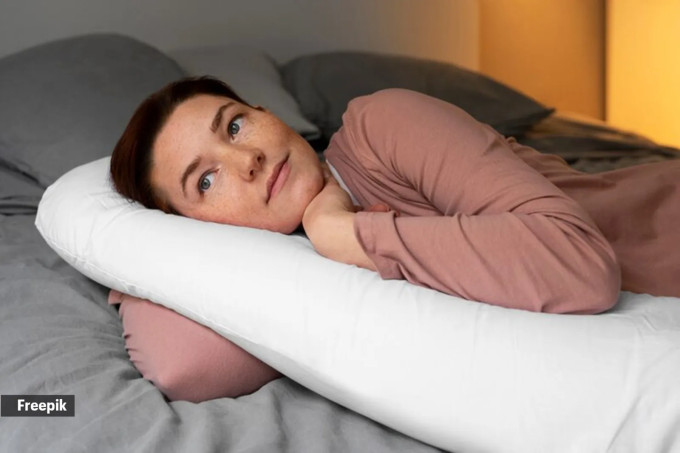Science says rocking yourself to sleep works: Here’s how to do it right
In the quest for a good night’s sleep, many of us have tried various remedies, from herbal teas to white noise machines. But what if the key to unlocking restful slumber lies not in a medicine or gadget, but in a simple, yet unconventional technique?
According to content creator Allan Mandell, this method can help put you to sleep quickly. “Before you go to bed, put a pillow between your knees, get out of your side, either side. And once you’re comfortable, I just want you to rock from your hips down. Just rock this portion back and forth,” he explains.

He suggests doing this for a few minutes. Madell continues, “What this is going to do, this is going to stimulate the vestibular portion within our inner ear. It’s going to send messages to the brain, as well as the prefrontal cortex. This is going to wind you down, take away your anxiety, your negative thoughts and your stresses.”
 While gentle rocking might help some people fall asleep faster, its effectiveness can vary widely among individuals. (Source: Freepik)
While gentle rocking might help some people fall asleep faster, its effectiveness can vary widely among individuals. (Source: Freepik)
Does this technique hold up to scientific scrutiny, or is it merely another bedtime myth?
Dr Manoj Mishra, senior consultant ENT, Head, Neck and Cancer Surgeon at Max Super Speciality Hospital, Lucknow, says, “The vestibular system in the inner ear plays a crucial role in maintaining balance and orientation. Rocking movements can stimulate this system, which is linked to the areas of the brain involved in sleep regulation.”
Research suggests that rhythmic rocking can enhance brain wave oscillations, he cites, associated with faster sleep onset. This effect is believed to stem from the synchronisation of neural networks involved in sleep transitions.
“Stimulating the vestibular system through gentle rocking can influence the brain’s prefrontal cortex, which is involved in regulating emotions and stress. By activating this part of the brain, rocking may help reduce anxiety and promote relaxation, creating a conducive environment for sleep,” remarks Dr Mishra.
The motion may also stimulate the release of endorphins and other neurochemicals that contribute to mood elevation and stress reduction, he says, further aiding the relaxation needed for sleep.
Potential risks and drawbacks associated with using this sleep hack
For individuals with certain vestibular disorders such as vertigo or balance issues, Dr Mishra warns that the rocking motions could potentially exacerbate symptoms. “It’s important for those with underlying health conditions to consult healthcare providers before trying this sleep hack.”
He also mentions that there’s a risk that reliance on this method could delay seeking treatment for underlying sleep disorders or medical issues that might be causing sleep disturbances.
View this post on Instagram
A post shared by Alan Mandell (@motivationaldoc)
How effective is this technique compared to other established sleep aids?
While gentle rocking might help some people fall asleep faster, its effectiveness can vary widely among individuals. “Traditional sleep aids, whether behavioural techniques like cognitive-behavioural therapy for insomnia (CBT-I) or pharmacological solutions, generally have more consistent results across diverse populations,” he confirms.
Studies like those published in Current Biology, he says, suggest that rhythmic stimulation, including rocking, can positively affect sleep. However, more extensive research is needed to fully compare its effectiveness against other established methods.
Disclaimer: The copyright of this article belongs to the original author. Reposting this article is solely for the purpose of information dissemination and does not constitute any investment advice. If there is any infringement, please contact us immediately. We will make corrections or deletions as necessary. Thank you.
